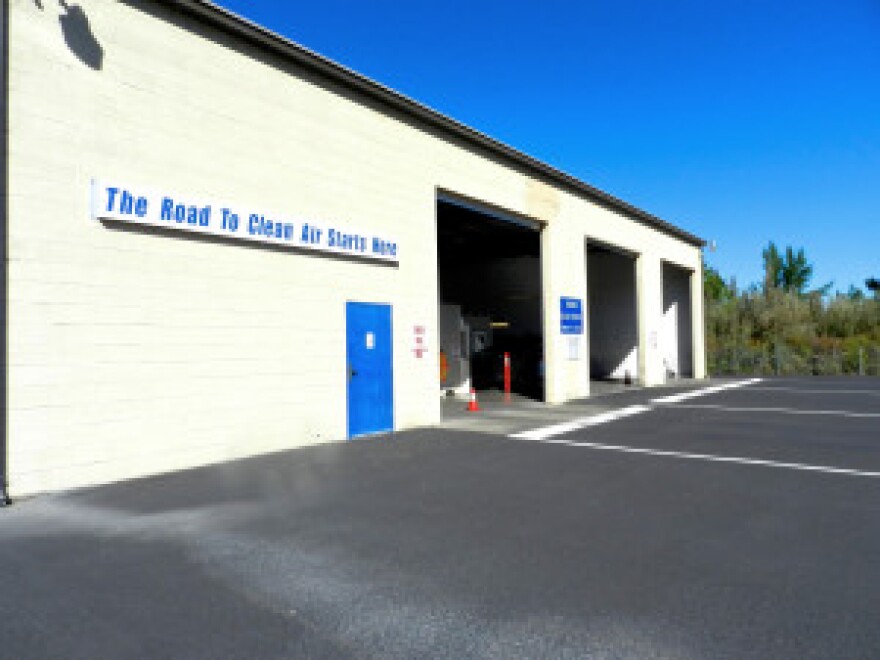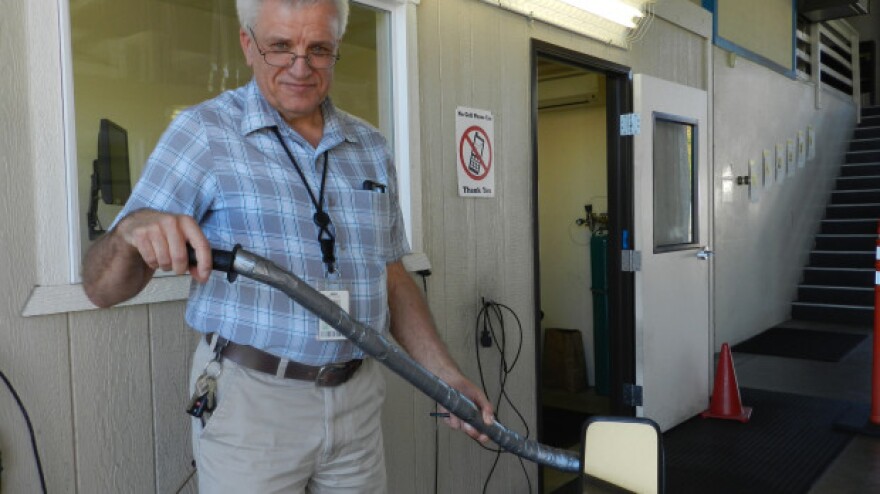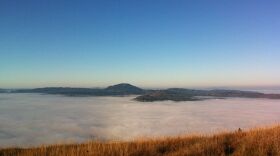In October, the Environmental Protection Agency took steps to protect public health by tightening restrictions on smog. The new clean air standard is not as far-reaching as health and environmental advocates were calling for. But it’s more strict than many industry representatives wanted to see.
OK, here’s your quick chemistry lesson for the day – Helping explain here is Oregon Department of Environmental Quality’s David Collier.
David Collier: “Ozone is gas that’s formed in the atmosphere, so it’s not emitted directly from a tailpipe or a stack…
But the raw components are: oxides of nitrogen – made when things are burned – and Volatile Organic Compounds – think the fumes your smell at the gas station.
David Collier: “That pollution goes up into the atmosphere and on hot days, especially when the air is stagnant, it kind of cooks and ozone is formed.”
Atmospheric ozone is necessary for human survival – it protects us from harmful U-V rays from the sun. But when ozone forms near the ground, it’s a health risk that’s better known as smog.
John Raymond: “Have you been in Southern California?”
That’s John Raymond from the Washington Department of Ecology. Los Angeles is the spot many envision when they think smog. But places like Medford and Hermiston in Oregon and Enumclaw in Washington also see their share of smoggy days.
John Raymond: “It’s usually downwind from the metropolitan area where the traffic and industry is – is where the ozone measurements are the highest. Like in Seattle, it’s toward Mt. Rainier.”

The Environmental Protection Agency lowered the threshold for how much ozone can be in the air – the new level is 70 parts per billion. While many places in the U-S will have to figure out how to clean up, the Northwest is in pretty good shape. As of 2014, no places here were averaging greater than 65 parts per billion.
Part of it is luck of geography and weather, but the other part is steps Oregon and Washington have already taken to fix air pollution problems in the past.
At the vehicle inspection station in Medford, cars and trucks work their way through the open bays.
The technician plugs a long wire into the car’s on-board computer to ensure the emissions system is working like it should.
Juergen Bigalke: “We do, you know, one-stop service here…”
Juergen Bigalke manages the station.
Juergen Bigalke: “In beginning we had a lot of people come in, and they put little black tape over check engine light, or did all kinds of things. They failed of course, because there was code in computer, you know, and we couldn't pass them. But right now, people know before they come over here, ‘Hey, I need to get that fixed.’”
Still, the technicians sometimes have to break some bad news to drivers when their vehicles don’t check out.
“So it did not pass – probably, like you said, because the battery was dead it erases all the memory in the computer. Until you drive it enough to run through its tests, we don’t know if everything’s okay.”
The vehicle inspection station is making a difference, says Bigalke.
Juergen Bigalke: “Look back 15 years, it was really bad. And that's why the program was installed. And it has cleaned up the air really nicely.”
That doesn’t mean the Northwest is totally in the clear; this year, wildfires are complicating the equation. Many regions, like the Puget Sound, have seen more smog because of the drifting smoke.
All the more reason to keep human-caused pollution in check, says Oregon’s David Collier.
David Collier: “When you think about the future growth of populations, growth of air pollution from all kinds of sources, and as summers get hotter and hotter, which drives more ozone formation… We want to be very mindful of being proactive too - to try to prevent problems, even if we might be sitting good today.”
The EPA won’t necessarily hold communities accountable for smog caused by natural events like wildfire. But the pollution is still very real for people who have to breathe the air.
Copyright 2015 KLCC.



